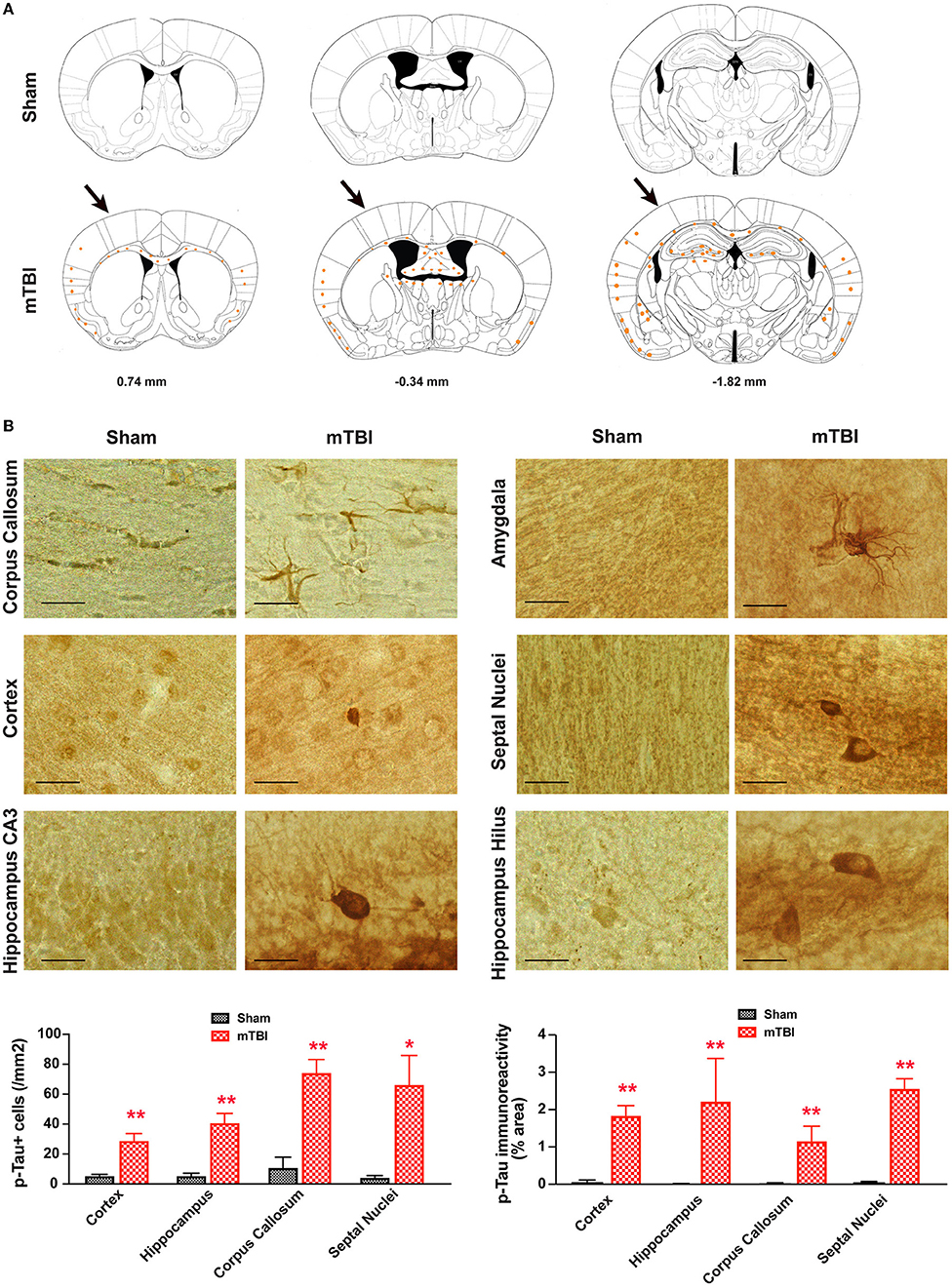
94% of researchers rate our articles as excellent or good
Learn more about the work of our research integrity team to safeguard the quality of each article we publish.
Find out more
CORRECTION article
Front. Neurol., 29 June 2022
Sec. Neurotrauma
Volume 13 - 2022 | https://doi.org/10.3389/fneur.2022.730576
This article is a correction to:
Neuroradiological Changes Following Single or Repetitive Mild TBI
 Jian Luo1,2*
Jian Luo1,2* Andy Nguyen1,2
Andy Nguyen1,2 Saul Villeda1,2†
Saul Villeda1,2† Hui Zhang1,2
Hui Zhang1,2 Zhaoqing Ding1,2
Zhaoqing Ding1,2 Derek Lindsey2
Derek Lindsey2 Gregor Bieri1,2
Gregor Bieri1,2 Joseph M. Castellano1,2
Joseph M. Castellano1,2 Gary S. Beaupre2
Gary S. Beaupre2 Tony Wyss-Coray1,2*
Tony Wyss-Coray1,2*A Corrigendum on
Long-Term Cognitive Impairments and Pathological Alterations in a Mouse Model of Repetitive Mild Traumatic Brain Injury
by Luo, J., Nguyen, A., Villeda, S., Zhang, H., Ding, Z., Lindsey, D., Bieri, G., Castellano, J. M., Beaupre, G. S., and Wyss-Coray, T. (2014). Front. Neurol. 5:12. doi: 10.3389/fneur.2014.00012
In the original article, there was a mistake in Figure 8B as published. In the left bottom panel of Figure 8B, the image representing hippocampal CA3 of sham controls was from an animal with mTBI. The error was introduced while making figures. The corrected Figure 8 appears below showing images from a different experiment that confirmed the original findings, with additional quantitative analysis showing the difference between sham and mTBI animals.

Figure 8. Prominent p-Tau immunoreactivity after repetitive mTBI. Wildtype C57BL/6J mice (male, 3 months of age) received three mild impacts (mTBI) or underwent sham procedures (sham). Mice were sacrificed 6 months later and brains were fixed for immunohistochemistry with an antibody against phospho-Tau (p-Tau, AT8). (A) Schematic diagrams of brain sections adapted from the mouse brain atlas (26) represent the approximate antero-posterior levels (to Bregma) where consistent neuropathological alterations were observed in mTBI (bottom) compared with sham (top). Note less p-Tau immunopositive cells in the contralateral side. The arrows in the bottom panel show approximate point of impact. (B) Representative images obtained from ipsilateral side of mTBI showing p-Tau immunoreactive cells in the corpus callosum, amygdala, hippocampus, and septal nuclei. Notice the weak or absence of p-Tau immunoreactivity in sham group. Scale bar = 20 μm. p-Tau immunoreactivity of ipsilateral side (bottom panels) was quantified as numbers of p-Tau+ cells (left panel) or percentage of area occupied (right panel) from different brain regions. Mean ± SEM. *P < 0.05; **P < 0.01, by t-test.
The authors apologize for this error and state that this does not change the scientific conclusions of the article in any way. The original article has been updated.
All claims expressed in this article are solely those of the authors and do not necessarily represent those of their affiliated organizations, or those of the publisher, the editors and the reviewers. Any product that may be evaluated in this article, or claim that may be made by its manufacturer, is not guaranteed or endorsed by the publisher.
Keywords: mild traumatic brain injury, long-term, neurobehavior, bioluminescence, astrogliosis
Citation: Luo J, Nguyen A, Villeda S, Zhang H, Ding Z, Lindsey D, Bieri G, Castellano JM, Beaupre GS and Wyss-Coray T (2022) Corrigendum: Long-Term Cognitive Impairments and Pathological Alterations in a Mouse Model of Repetitive Mild Traumatic Brain Injury. Front. Neurol. 13:730576. doi: 10.3389/fneur.2022.730576
Received: 25 June 2021; Accepted: 25 April 2022;
Published: 29 June 2022.
Edited and reviewed by: Mårten Risling, Karolinska Institutet (KI), Sweden
Copyright © 2022 Luo, Nguyen, Villeda, Zhang, Ding, Lindsey, Bieri, Castellano, Beaupre and Wyss-Coray. This is an open-access article distributed under the terms of the Creative Commons Attribution License (CC BY). The use, distribution or reproduction in other forums is permitted, provided the original author(s) and the copyright owner(s) are credited and that the original publication in this journal is cited, in accordance with accepted academic practice. No use, distribution or reproduction is permitted which does not comply with these terms.
*Correspondence: Jian Luo, amlhbmxAc3RhbmZvcmQuZWR1; Tony Wyss-Coray, dHdjQHN0YW5mb3JkLmVkdQ==
†Present address: Saul Villeda, Department of Anatomy, Eli and Edythe Broad Center of Regeneration Medicine and Stem Cell Research, University of California, San Francisco, CA, USA
Disclaimer: All claims expressed in this article are solely those of the authors and do not necessarily represent those of their affiliated organizations, or those of the publisher, the editors and the reviewers. Any product that may be evaluated in this article or claim that may be made by its manufacturer is not guaranteed or endorsed by the publisher.
Research integrity at Frontiers

Learn more about the work of our research integrity team to safeguard the quality of each article we publish.